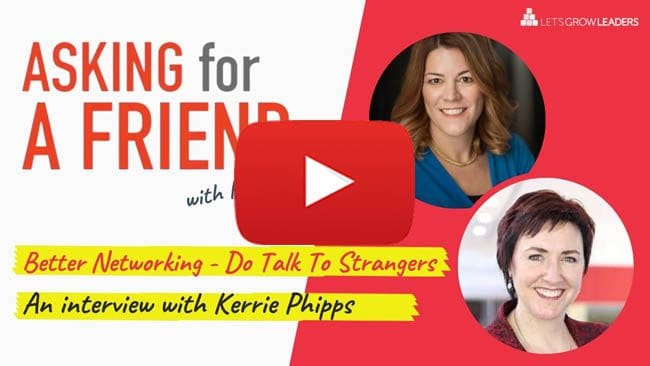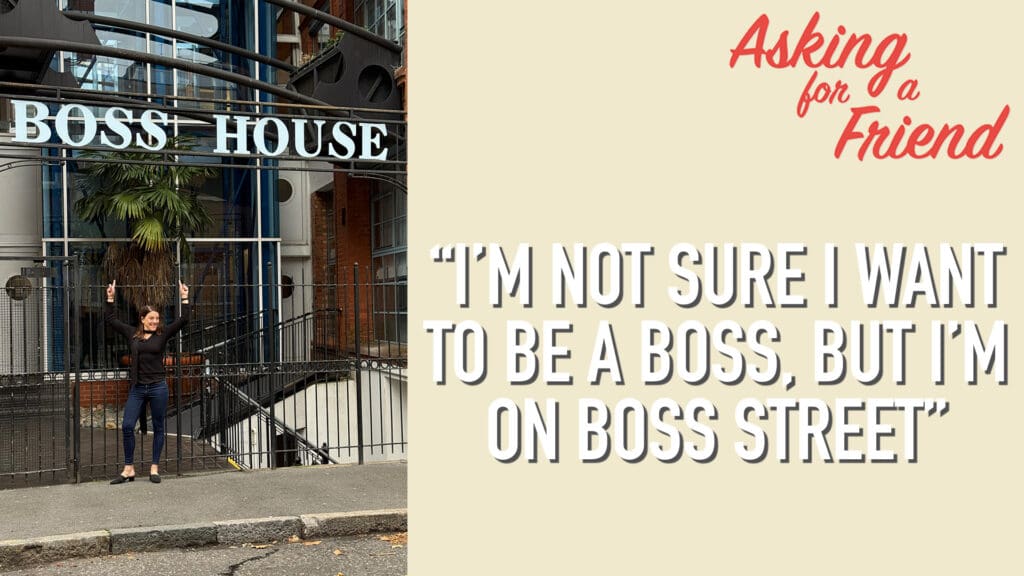Try These Practical Techniques to Improve Your Remote Small Talk
Small talk is challenging for many leaders, but it can be even more challenging when leading a remote team. In this episode of Asking For a Friend, I talk with small talk experts Debra Fine and Scott Friedman about practical ways to approach this fine art.
“Yeah, I don’t do small talk.”
“My team understands, I’m cool with THEIR chit chat in-between meetings, but I don’t really have time for that stuff. I’m all business. That’s why I’m so productive.”
“I get that small talk is important, but I just hate it’s so uncomfortable. I never know what to say.”
“I love hearing about what’s going on with my team personally, but I don’t want to waste their time talking about my personal life, so I keep that to myself.”
These are all phrases we’ve heard from managers (and executives) recently. And yet, what we hear from their teams is quite a different story. People are yearning for human connection, with one another and their manager.
The truth is small talk is no small matter. People are yearning for trust and connection, and a feeling of being around a virtual watercooler.
5 Practical Ways to Up Your Remote Small Talk Game
In our Asking for a Friend Live series this week, Karin interviewed connection experts Scott Friedman and Debra Fine about building connection and celebration—and of course, the importance of small talk in the mix.
A few tips from that conversation:
1. Use prompts to invite a deeper conversation.
 Debra suggests that instead of asking “How are you?” Use the phrase, “Catch me up.”
Debra suggests that instead of asking “How are you?” Use the phrase, “Catch me up.”
For example, don’t just ask, “How’s your kid?” Because of course, you’ll hear the most likely answer, “Oh, he’s fine.”
But if you say, “Catch me up about your son, Sebastian. What’s he’s been up to since we last spoke?” just like that, you are having a meaningful conversation that helps your co-worker feel seen and cared for.
2. Make casual check-ins a task.
If you struggle with small talk, make small talk a task.
For example, you could make a calendar appointment to reach out to two people you work with each day, just to check in. Or, if you’re leading a meeting, make a deliberate plan to start the meeting with space for small talk and a check-in prompt or two. Then, just like every other task, once you’ve completed it you can check it off. (P.S. no one needs to know you think of it as a task. They’ll just love the time for connection.)
3. Book-end each meeting with time for casual conversations.
Small talk doesn’t have to take a lot of time. As you head into each remote meeting, think about having small talk frame your meeting like bookends. Begin and end every meeting with time to connect for five minutes at a human level.
4. Create opportunities for asynchronous small talk.
One of the I.D.E.A.s that came out of a recent Courageous Cultures live-online program was to build a series of Slack channels where employees could engage with one another as they had time around topics they cared about (e.g. recipes, funny pet pics/stories, fitness challenges).
5. Make it a ritual.
Scott talks about the power of “Wow Friday,” where people get a moment to share their concerns and celebrations.
Wine: Get a beverage of choice and give people a chance to share what’s on their hearts.
Wow: Celebrate something good, and be able to celebrate.
More here…
More on Small Talk and Networking: Do Talk to Strangers

Join us on Friday’s For Asking For a Friend
Join Karin every Friday at 11:30 EST for her Asking For a Friend Video Series where she shares practical tools and techniques including interviews with well-known authors and business leaders from around the world.
Your turn.
What are your best tips for creating casual conversations in virtual teams?
See Also:
Fast Company- How to Replace Small Talk When Working Remotely
For more remote team tips and techniques visit our remote team resource center.








0 Comments